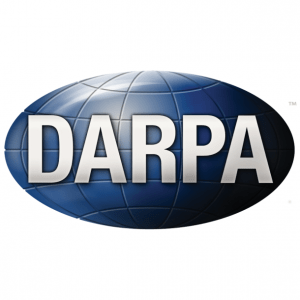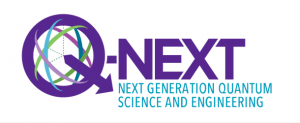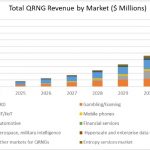Quantum News Briefs December 21: Interview with Joe Altepeter in DARPA’s Defense Sciences Office about quantum computing; RIBER deploys technologies to build core components of future quantum computers; Researchers tout fragmented, yet encrypted data storage scheme while waiting for quantum-proof standards + MORE

Quantum News Briefs December 21 begins with a Breaking Defense interview with Joe Altepeter in DARPA’s Defense Sciences Office about quantum computing followed by news about RIBER’s deployment of technologies to build core components of future quantum computers; third is an Axios report about researchers touting fragmented, yet encrypted data storage scheme while waiting for quantum-proof standards + MORE.
*****
Interview with Joe Altepeter in DARPA’s Defense Sciences Office about quantum computing: Mandate is to eliminate strategic surprise
 Barry Rosenberg recently interviewed Joe Altepeter, a program manager in DARPA’s Defense Sciences Office (DSO), to discuss the state of quantum computing and its military applications for Breaking Defense. Quantum News briefs summarizes the interview.
Barry Rosenberg recently interviewed Joe Altepeter, a program manager in DARPA’s Defense Sciences Office (DSO), to discuss the state of quantum computing and its military applications for Breaking Defense. Quantum News briefs summarizes the interview.
Altepeter explained, “At DARPA, our mandate is to eliminate strategic surprise. While people have been thinking about quantum computers and factoring for decades now, we’re interested in the next application which might take us all by surprise and lead to a computing revolution. We’re interested in [knowing if there] are there other surprising uses of quantum computers.”
At this point, quantum computers are being used for proof-of-principle problems that show we can do something that nothing else can do, but we haven’t taken that next step of bending that computing power to a useful problem that we really need an answer to.
For the DoD, that means having an effect in the field, doing something we care about. There’s a lot of tantalizing pathways. If we keep getting better quantum computers and we better understand how to bend them against the problems we care about, maybe we can solve corrosion resistance and save the Navy billions of dollars maintaining their ships. Maybe we can come up with better pharmaceuticals and significantly reduce the cost of the drugs we need to care for our people. Maybe we can solve optimization problems and significantly increase the efficiency of everything we’re doing.
Reporter Rosenberg asked, “Are you trying to speed up quantum development — software, chips, AI at DARPA?” Altepeter responded, “The biggest next step is to start focusing on the end goal.. . we need to look ahead. Maybe it’s decades away, but what computational capability would be a game changer for the DoD, for the commercial space?’
Altepeter concluded, “DARPA is not convinced that quantum is going to be a revolutionary capability. We’re also not a skeptic who thinks that quantum’s definitely not going to work. We want to go in with a clear-eyed view and do a rigorous evaluation to see where and how and on what path quantum can make the DoD’s capabilities better, and can really make the world a better place.” Click here to read interview in-entirety.
*****
RIBER deploys technologies to build core components of future quantum computers
 RIBER has further strengthened its development on the quantum processor materials market in 2022. Quantum News Briefs summarizes below.
RIBER has further strengthened its development on the quantum processor materials market in 2022. Quantum News Briefs summarizes below.
Through EPICENTRE, a Joint Laboratory with LAAS-CNRS in Toulouse, set up in June 2021, RIBER has started to deploy the technologies making it possible to build the core components of future-generation quantum computers. These are based on the physical phenomenon of quantum entanglement, which occurs when two elementary particles – two electrons (electrical particles) or two photons (light particles) – share identical parameters even though they are very far apart.
This requires stringent conditions for their production environment, which must be ultra-pure, ultra-controlled and ultra-cold, with single-atom precision. The technologies available to deliver these performance levels include MBE, the material growth technique in which RIBER has built up industry-leading expertise, which is one of the best positioned.
The various stages for developing the quantum dots, superconductors and insulators require various deposition chambers which must have an ultra-high – or almost perfect – vacuum in order to avoid any contamination. Vacuum quality is part of the excellence provided by RIBER’s technology for these MBE machines. An MBE machine for quantum computers will therefore include several deposition chambers connected together by robots under ultra-high vacuum conditions. It may include three to five chambers linked by two or three robots under ultra-high vacuum conditions, controlled by highly sophisticated supervision software which manages the sample movements and material deposition process. The advanced technology has a market value of several million euros per machine. This is illustrated by the order announced on October 25 for several million euros of research equipment, including several chambers and equipment items,
Michel Picault, Chairman of RIBER’s Executive Board, concludes: “The quantum technology is very promising, but it still needs to overcome some significant development challenges to build specific chips. RIBER’s MBE technology will make it possible to accelerate progress towards manufacturing quantum chips on a larger scale. Our Joint Laboratory with LAAS-CNRS will help us reach this higher level of technological maturity more quickly”. Click here to read announcement in-entirety.
*****
Researchers tout fragmented, yet encrypted data storage scheme while waiting for quantum-proof standards
 Sam Sabin of Axios codebook shared research from The Foundation for Defense of Democracies (FDD) published December 16 that that suggests pursuing a fragmented, yet still encrypted, data storage scheme might be the best bet companies have now to get ahead of the quantum threat rather than having to wait for new quantum-proof encryption standards. Quantum News Briefs summarizes below.
Sam Sabin of Axios codebook shared research from The Foundation for Defense of Democracies (FDD) published December 16 that that suggests pursuing a fragmented, yet still encrypted, data storage scheme might be the best bet companies have now to get ahead of the quantum threat rather than having to wait for new quantum-proof encryption standards. Quantum News Briefs summarizes below.
In their report an FDD research team tested a data storage technique known as “augmented improbability of access,” where data is individually encrypted and then stored in pieces across various places like the cloud, mobile devices and physical computers. Doing so would add more hurdles for hackers trying to collect any encrypted data they’re trying to unlock since they’d need to break into multiple storage locations to piece together the whole file. However, each organization would have to take time to figure out its unique storage needs, and implementation could still take “between two weeks and several months,” per the paper.
To help prepare for this risk of ineffective encryption, FDD’s Transformative Cyber Innovation Lab (TCIL) explored an alternative approach that government agencies and private companies can implement more quickly so they are prepared to face the quantum threat. TCIL walked through onboarding an enterprise-wide security strategy dubbed augmented improbability of access (AIA), which applies the principles of information-theoretic security to defend against a cryptanalytically relevant quantum computer, or CRQC.
AIA strategies also mitigate the risk that adversaries will steal encrypted data today and wait to decrypt it until CRQCs are available. AIA strategies prevent the adversary from collecting sufficient components to decrypt stolen data, even if victims are not using post-quantum encryption.
This pilot project’s goal is to better inform organizations how to enhance security and mitigate the diminishing lifespan of current encryption algorithms without having to wait for NIST’s new encryption standards. TCIL’s research findings conclude that the U.S. government and private entities should pursue AIA solutions. Click here to read the FDD’s Transformative Cyber Innovation Lab (TCIL) report.
*****
Q-NEXT Quantum Center releases roadmap for quantum information tech
The Q-NEXT quantum research center has published a new report, “A Roadmap for Quantum Interconnects,” which outlines the research and scientific discoveries needed to develop the technologies for distributing quantum information on a 10- to 15-year timescale. Quantum News Briefs summarizes the announcement.
Q-NEXT is a U.S. Department of Energy (DOE) National Quantum Information Science Research Center led by DOE’s Argonne National Laboratory.
The roadmap focuses on quantum interconnects, devices that link and distribute quantum information between systems and across distances to enable quantum computing, communications and sensing.
The roadmap comprises three sections, focused on quantum interconnect use in quantum computing, communication and sensing. Each section identifies the science and technology imperatives needed to advance the research area over the next decade; lays out the components and systems they use; poses questions that need to be addressed by the community; and outlines the developments necessary to turn the technology to practical advantage. Click here to read the announcement about the report in-entirety.
*****
Sandra K. Helsel, Ph.D. has been researching and reporting on frontier technologies since 1990. She has her Ph.D. from the University of Arizona.





















